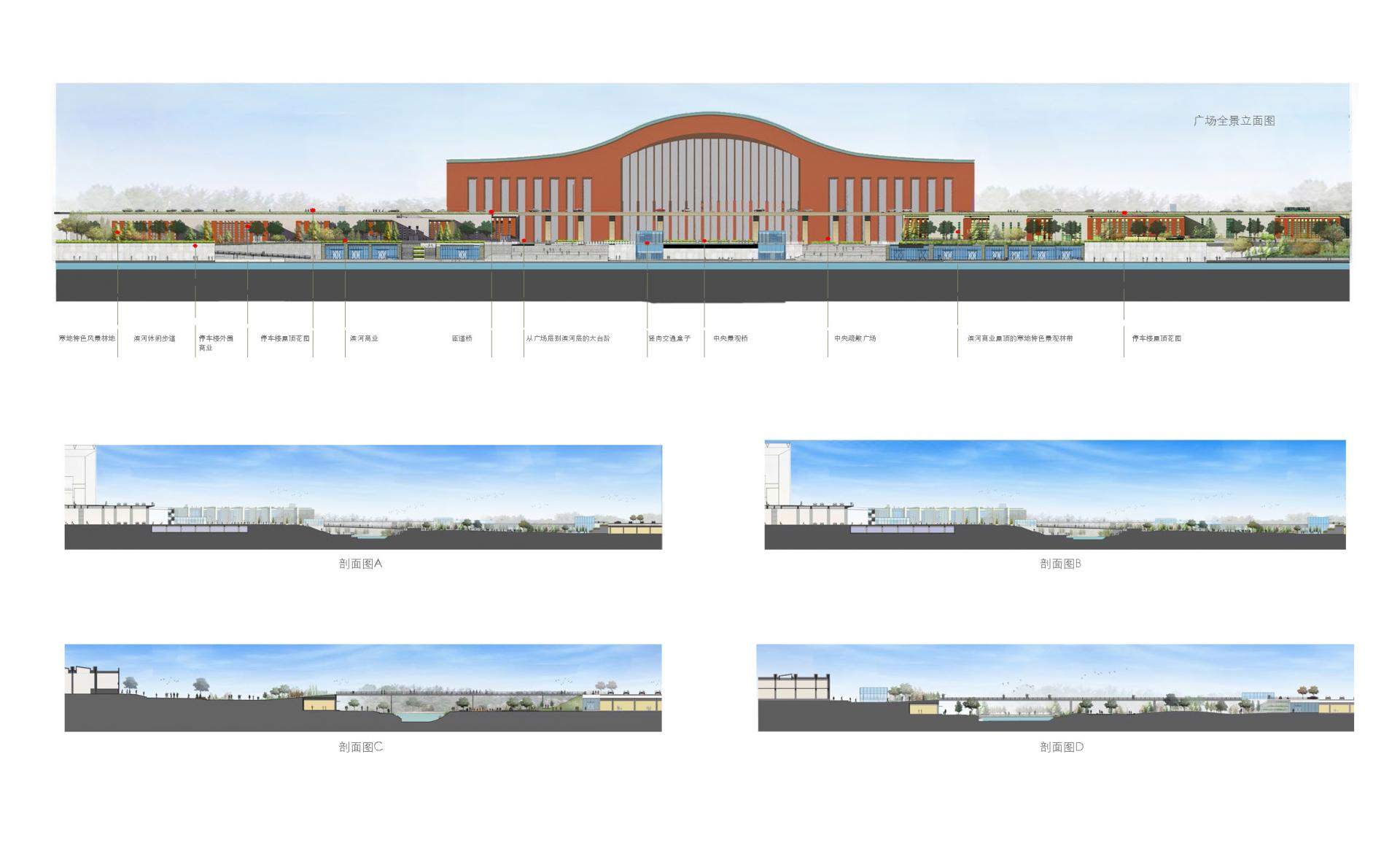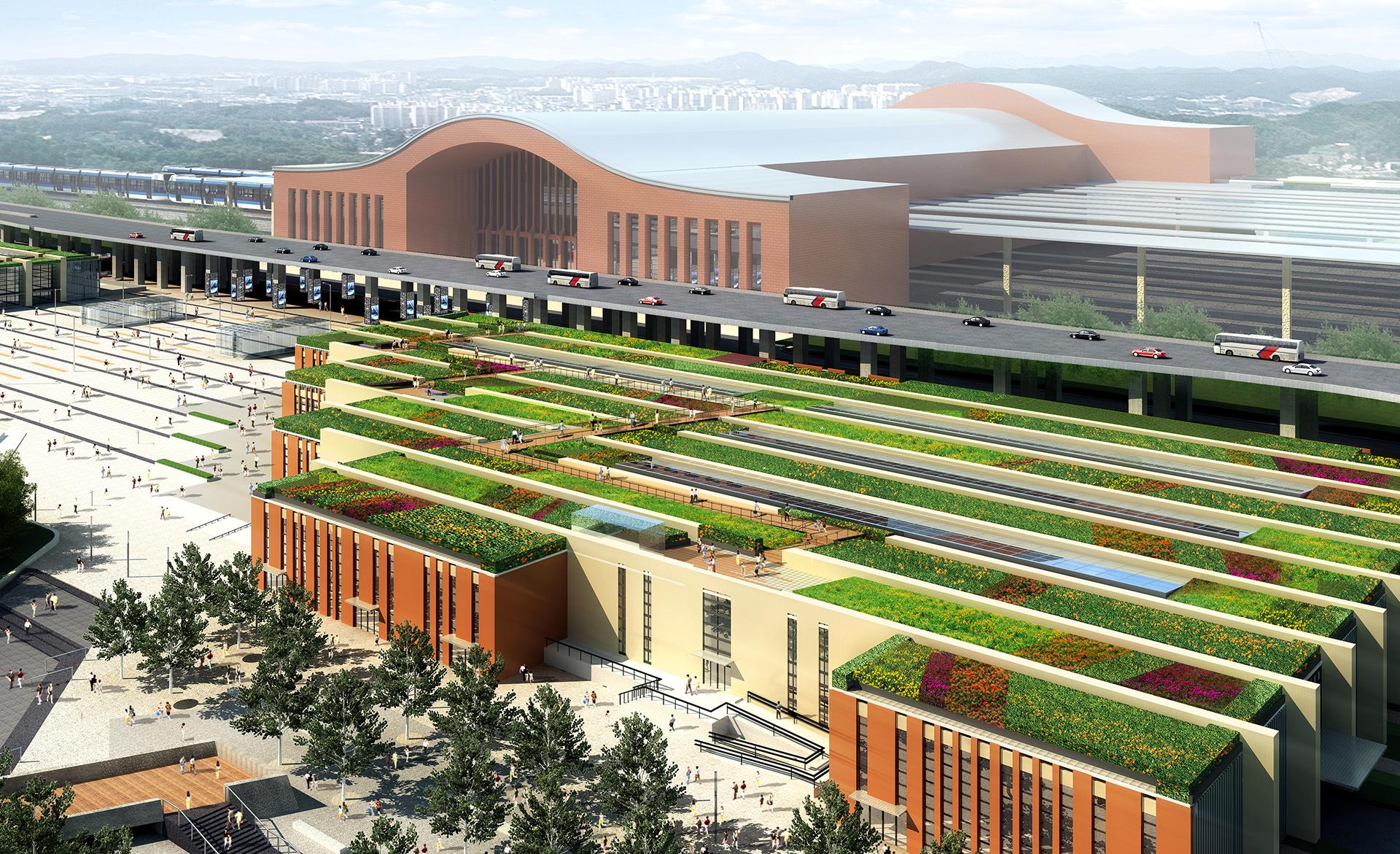Harbin Railway Station West Square
Location: Heilongjiang, China
Site Area: 12.7 ha
Client: Haxi New District Gov.
The West Square of the Harbin West Bus Station serves as a pivotal forecourt to the train station, assuming a critical role in facilitating the pre-evacuation function of the regional transportation hub. It also serves as the terminus of the primary commercial pedestrian thoroughfare in Harbin West, emblematic of the city's gateway as a sprawling urban expanse. In contrast to the predominantly rigid landscaping of the East Square, the West Square is envisioned as an urban ecological leisure hub distinguished by verdant vegetation landscapes.
Characterized by significant elevation disparities and traversed by a river, the site presents both challenges and unique opportunities for spatial arrangement and pedestrian connectivity. The landscape design capitalizes on these natural gradients, employing integrated landscape bridges to seamlessly link the riverbanks and diverse activity zones situated at varying elevations. Alterations to the river's cross-section yield riverside vistas at multiple water levels. While fulfilling the imperative of facilitating transportation connections, the design maintains a cohesive spatial narrative that harmonizes with the surrounding terrain. Diverse civic activity spaces, delineated by distinct themes and scales, are thoughtfully orchestrated, transforming the square into a dynamic platform for the exhibition of urban life and culture.
In fostering an ecologically sustainable environment, the design prioritizes water quality enhancement through the incorporation of ecological revetments and artificial wetlands. The waterfront areas are meticulously designed to accommodate fluctuating water levels, ensuring an inviting riverside ambiance throughout the year, even amidst the pronounced disparities of the rainy and dry seasons. Moreover, cognizant of the region's frigid climate, the design integrates seasonal variations of northern-themed plant landscapes. Particularly for the historic urban precincts of Harbin lacking extensive green spaces, the inclusion of locally characteristic cold climate scenic woodlands serves as a vital augmentation to the urban ecological fabric.








